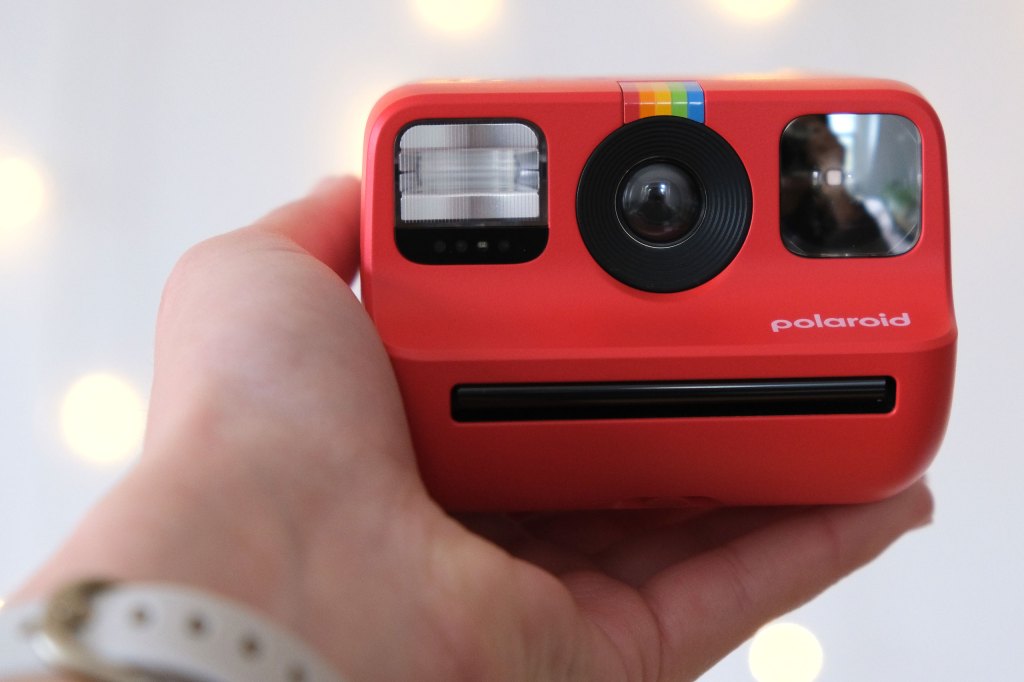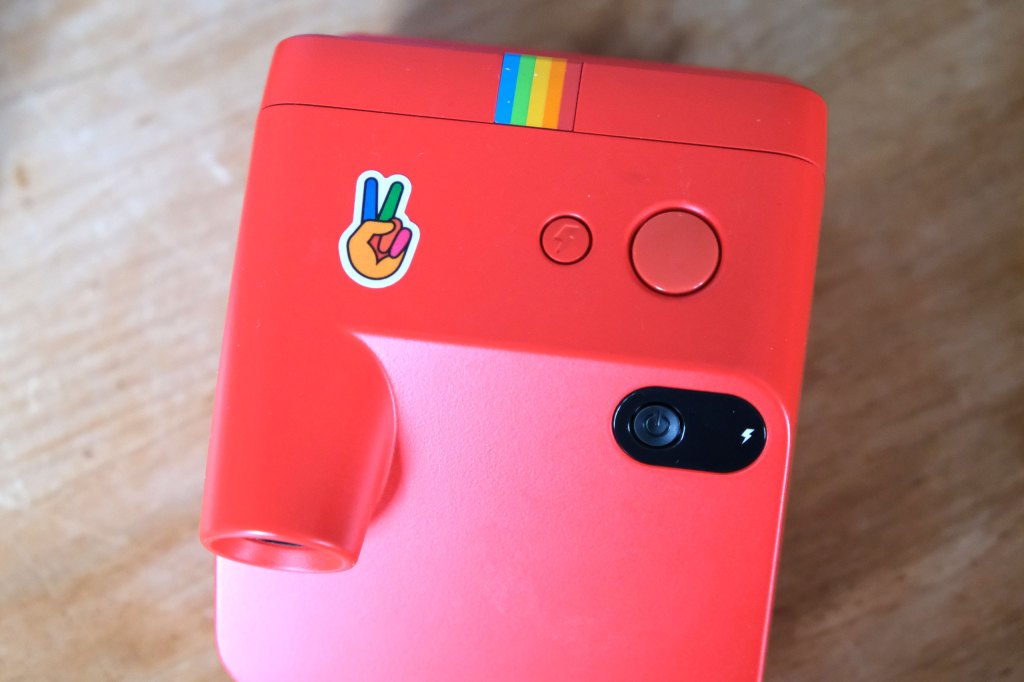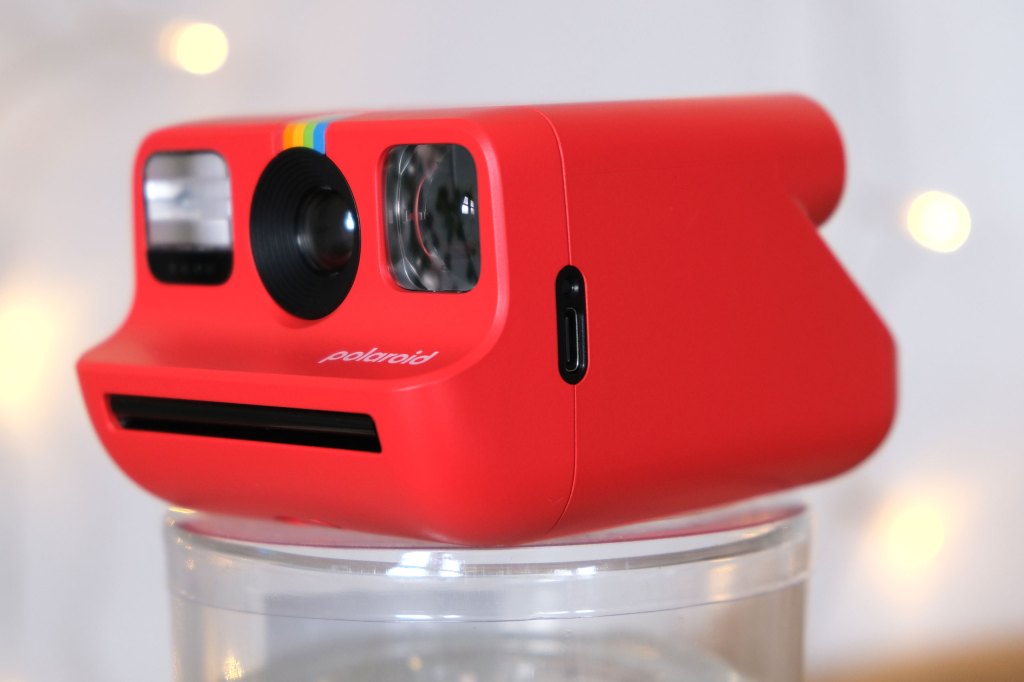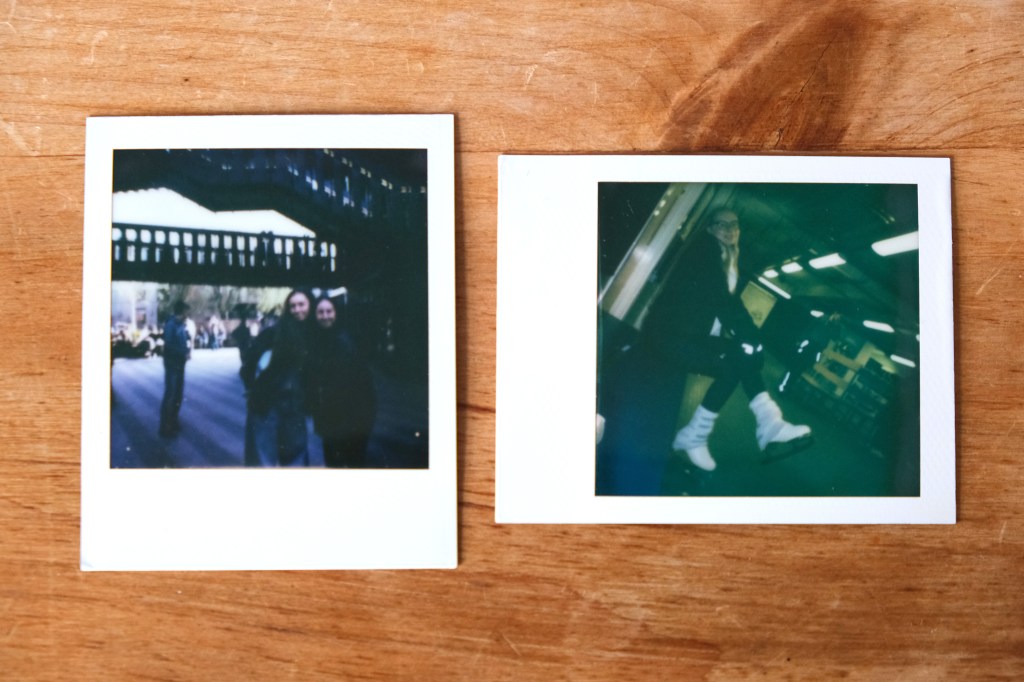Amateur Photographer verdict
The Polaroid Go Generation 2 is a tiny camera that mostly gives detailed and bright images.- Mostly gives bright, detailed images
- Tiny size
- Good value for money
- Self-timer and double exposure capabilities
- USB-C charging
- Not great low light performance, even when flash is on
- Film is relatively expensive
- No Macro/Close-up mode
The Polaroid Go Generation 2 is an update on the Polaroid Go Generation 1 with updated firmware. Released in spring 2024, this instant camera comes with a larger aperture lens, as well as a more ‘precise’ light sensor for clearer and brighter images. It’s a nicely portable camera for fans of the retro small square print style of instant photos.
At a glance
- Aperture: F9 and F42
- Available in blue, white, red and black colour options
- Compatible with Polaroid Go film
- Price from $79 / £79
- Polaroid.com
Camera body and design
Shaped like most of Polaroid’s modern cameras, the Polaroid Go Generation 2 literally fits in your hand. It now comes in blue as well as black, white and red colour options and, according to Polaroid, is made with 30% recycled materials.
Measuring 105 x 84 x 62mm and weighing about 239 grams without the film pack, the Polaroid Go Generation 2 is among the smallest instant cameras you can get. While it is small, it’s only slightly shorter than other small instant cameras like the Instax Mini 8.
It includes a built-in selfie mirror that sits at the front of the camera, along with the lens and flash (which has a small section underneath that turns on when the self-timer is active and acts as a visual countdown).
The flash button located next to the shutter button on the top of the camera has many uses. Primarily, it can be used to turn the flash on and off by pressing the flash button once. To activate the self-timer, you need to press the flash button down for a few seconds, and to activate the double exposure mode, you need to press it twice.
Next to the viewfinder is the On/Off button and a tiny LED screen that shows how many photos your camera has left as well as whether the flash is on. It will show a 1 and 2 when the double exposure mode is turned on to indicate how many shots you’ve got left while using the mode (you can only take two shots per photo when using the mode).
The Polaroid Go Generation 2 has an internal rechargeable lithium-ion battery and a USB-C cable that is provided when you buy the camera, along with a wrist strap and Quick Start Guide.
The shooting experience
The Polaroid Go Generation 2 has a wider aperture than the original Polaroid Go – a F9 to F42 aperture instead of F12 to F56 on the Polaroid Go Generation 1. It also has a bumped up maximum shutter speed of up to 1/300 of a second, which Polaroid says complements the aperture changes.
The camera has a polycarbonate resin fixed focus lens with a focal length of 51.1mm. Its light sensor’s positioning and field-of-view have been redesigned for more accurate metering.
On the whole, my images were very detailed and brightly-lit, especially when taken during the day. While a few photos lacked much contrast or had overblown whites, the lighting was mostly on point, even indoors.
Where it suffered was in low-light conditions, such as indoors inside an ice rink. A photo taken outdoors in Camden Market while standing in shadow during an otherwise sunny day came out underexposed and uncharacteristically blurry, presumably from the camera selecting a slow shutter speed. My photos also tended to come out looking slightly green or magenta, which is Polaroid’s signature film look.
It was quite fun seeing the results when using the double exposure mode and the self-timer was particularly useful when taking self-portraits. However, when taking selfies, it is worth holding the camera as far from your face as you can. If held too close, it can result in slightly blurry photos and unfortunately, Polaroid doesn’t provide a suggested shooting distance range.
I’d only ever briefly used a Polaroid camera once before this review, a Polaroid Now Generation 2, so a few things took some adjusting to. For example, figuring out how to select the double exposure mode and self-timer as well as the camera’s shutter not going off if I pressed the shutter while grabbing the camera with my fingers blocking the front of the camera.
The tiny camera is compatible with tiny Polaroid Go film. The square prints are shrunken down versions of bigger Polaroid prints and similar in size to Instax Mini prints.
Value for money
Unlike some Instax Mini cameras priced similarly, this camera does not have a dedicated close-up mode, which may be a slight drawback for some. What it does have that some Instax cameras like the Instax Mini 12 don’t is a self-timer and double exposure mode.
When choosing an instant camera, you might want to take your pick considering ease of use, print size as well as creative effects. If you’re looking for a portable, easy-to-use Polaroid that consistently takes detailed and bright tiny square photos and has some creative effects, the Polaroid Go Generation 2 might be a good fit.
But if you’re looking for an instant camera with more creative effects, other more advanced (but more expensive) Polaroid cameras will do the trick. Some recent as well as older Instax models such as the Instax Mini 99 and the Instax Wide 300 are also ones to consider if this is the case.

Like other Polaroid cameras, the Polaroid Go Generation 2 is available to buy as part of a bundle with a double pack of Polaroid Go Colour film for $99.99 / £94.99.
With this camera, given that the battery is inside the camera, any additional costs will likely just be related to buying film. Polaroid film is generally more expensive and has 8 shots, as opposed to Instax film packs which have 10. A double pack of Polaroid Go film containing 16 shots is $19.99 / £18.99 while a double pack of Instax Square film containing 20 shots is available from $19.99 / £16.99.
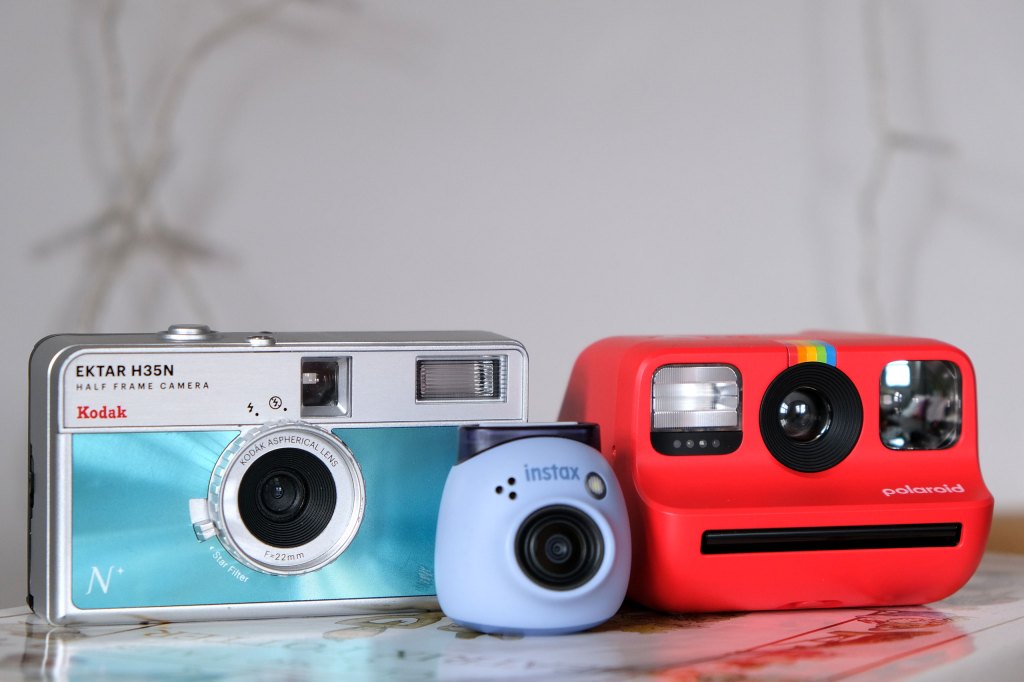
Verdict
All in all, the Polaroid Go Generation 2 is a very good choice for those who like small, square prints and are looking for a cute-looking and easy to use instant camera they can carry everywhere. It might be only marginally smaller than other instant analogue cameras – certainly not pocket-sized like the Instax Pal – but it’s small enough that it is likely to fit inside most bags. While it had some issues in low light, the Polaroid Go Generation 2 does have a decent hit rate and I had a lot of fun with it. Overall, it’s a nice introduction to Polaroid.

Related content:
- LEGO Polaroid OneStep SX-70 Camera review
- Polaroid I-2 high-end instant camera
- Best instant cameras and printers
Follow AP on Facebook, Twitter, Instagram, YouTube and TikTok.


